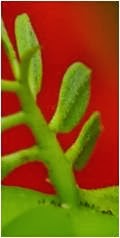Ninguém acertou o desafio inteiro, mas Rubens Queiroz chegou mais perto: todos os gêneros corretos e duas espécies corretas. Parabéns de novo Rubens, você é uma máquina de identificações!
Vejam as fotos completas abaixo:
-----------------------------------------------------------------------------------
Now here they go: full pictures and the species of the four plants of our last challenge. All of them were from the Cerrado (Brazilian Savannah) and Sazonal Semideciduous Forest, in the inner portion of São Paulo State, Brazil.
Nobody hit the jackpot, but Rubens Queiroz nearly hit: all genera correct, besides two species. Congrats again, Rubens, you are an identification machine!
See full pictures below:
Desafio original:/
Original challenge:
Click here: Desafio #5/Challenge #5
 |
| Figura original/ original picture Desafio #5/Challenge #5 |
Agora as plantas:/
Now the plants:
A) Prockia crucis P. Browne ex L. (Salicaceae)
 |
| Prockia crucis (Salicaceae) - Luís Antônio, São Paulo, Brazil. Floresta Estacional Semidecidual/ Seasonal Semideciduous Forest. Photo by Milton Groppo |
 |
| Pequi - Caryocar brasiliense (Caryocaraceae) Luís Antônio, São Paulo, Brazil. Cerrado/Brazilian Savannah. Photo by Milton Groppo |
C) Bromelia balansae Mez (Bromeliaceae) - "caraguatá"
 |
| Bromelia balansae (Bromeliaceae) Luís Antônio, São Paulo, Brazil - Cerrado/Brazilian Savannah. Photo by Milton Groppo |
D) Pterogyne nitens Tul. (Leguminosae) - "amendoim-do-campo"
 |
| Pterogyne nitens (Leguminosae) - Luís Antônio, São Paulo, Brazil. Floresta Estacional Semidecidual/ Seasonal Semideciduous Forest. Photo by Milton Groppo |
 |
| Pterogyne nitens (Leguminosae) fruto (samara)/ fruit (samara)- Luís Antônio, São Paulo, Brazil. Floresta Estacional Semidecidual/ Seasonal Semideciduous Forest. Photo by Milton Groppo
Para ver o desafio #1 e a proposta original (além da sua resposta) clique:/
To see the first challenge (and the idea behind it) and its answer, chick:
http://sistematicadeplantasrpherbariospfr.blogspot.com.br/2013/09/que-planta-e-esta-what-is-this-plant-1.html
para desafios anteriores clique:/
to previous challenges click:
http://sistematicadeplantasrpherbariospfr.blogspot.com.br/2013/09/que-planta-e-esta-what-is-this-plant-2.html |

































